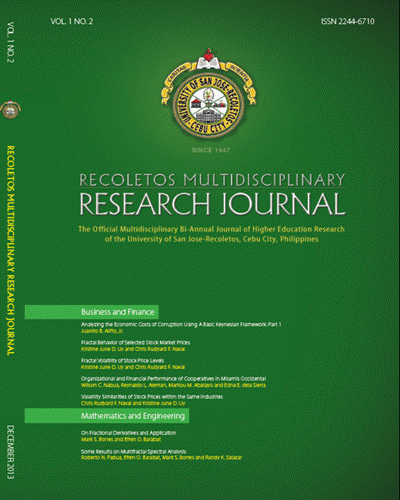Patterns of Roughness in Global Literacy Rates
DOI:
https://doi.org/10.32871/rmrj1301.02.14Keywords:
fractal dimension, spectrum, global literacy rateAbstract
This study examines the literacy rate of 204 countries all over the world focusing on both male and female population with ages 15 years old and above. The source indicates that of all the illiterate adults in the world, two-thirds are women. Data also reveal that extremely low literacy rates are concentrated in three regions: Afghanistan, South Asia, and Sub-Saharan Sahelian Africa, where around one-third of the men and half of all women are illiterate. Using fractal statistical analysis, it was found out that there is a varying pattern or complexity in the literacy rates among the male and female populations of the 204 countries; the fractal dimension of literacy rate of male is higher compared to the female. Based on the findings, it is concluded that since there are several countries with extremely low literacy rates, then the Millennium Development Goal of eradicating illiteracy by 2015 cannot be achieved. The study recommends that the governments should look into the fractality of the other indicators of human development and prosperity of the countries.
References
Chun, S., Wang, K. (2010). “Functional Literacy in Southeast Asia, Dâ€. (Education Forum, Vol. 36 (2), pp. 67-82)
Padua, R; Palompon ,D; Ontoy, D (2012). “Data Roughness and Fractal Statistics†(CNU Journal of Higher Education, Vol. 4)
N.A (2012). 2008 Functional Literacy and Mass Media Survey
Santamaria, R.; Balesteros, D. (2008). “ “Literacy and Functional Literacy in Underdeveloped Nations†(The Modern Educator, Vol. 68(4))
Downloads
Published
How to Cite
Issue
Section
License
Copyright of the Journal belongs to the University of San Jose-Recoletos


